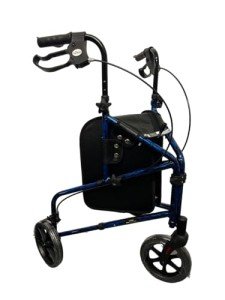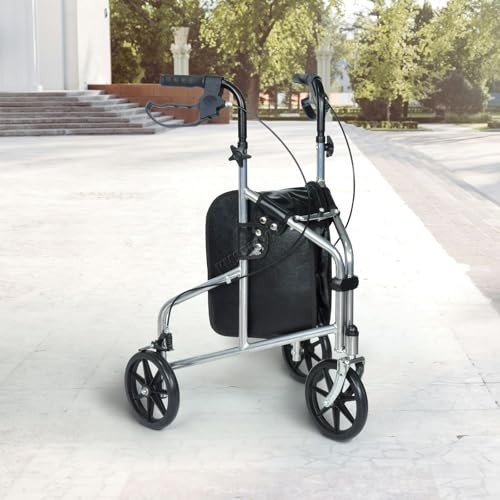This company has no active jobs
Seat Walker Tools To Simplify Your Everyday Life
The Seat Walker: A Comprehensive Guide to Mobility Aids
When it concerns keeping self-reliance and mobility, people with limited mobility or disabilities frequently count on different assistive gadgets. One such gadget that progressively pertains to the forefront of mobility aids is the seat walker. This article provides a thorough take a look at seat walkers-- their features, benefits, types, and the factors to consider when picking one.
What is a Seat Walker?
A seat walker is a versatile mobility aid created mostly for individuals who may have problem walking unaided. It usually includes a frame with wheels, deals with for assistance, and an integrated bench or seat, permitting users to take breaks when required. Unlike basic walkers or rollators, which only offer support for walking, the addition of a seat makes the seat walker substantially more practical for lots of users.

Secret Features of Seat Walkers
- Wheels: Most seat walkers are equipped with front wheels that boost mobility and ease of use, enabling users to glide smoothly over various surfaces.
- Seat or Bench: The most distinguishing feature is the integrated seat, which provides a resting place for users when fatigue sets in.
- Handles: Adjustable manages deal with various user heights, supplying adequate assistance and guaranteeing a comfortable grip.
- Brakes: Safety brakes avoid the walker from rolling away when someone is seated, improving user security.
- Lightweight Frame: Many models are created to be lightweight, making them simpler to transfer and maneuver.
Benefits of Using a Seat Walker
Seat walkers have many benefits that make them a perfect option for lots of users.

- Enhanced Mobility: They offer greater stability and support than traditional walkers, reducing the risk of falls.
- Convenience: The ability to rest at any point makes them suitable for those who tire easily or have restricted stamina.
- Self-reliance: Seat walkers permit users to keep a degree of independence by enabling them to stroll and rest without assistance.
- Adaptability: Suitable for both indoor and outdoor use, these walkers can adapt to numerous environments.
- Exercise: Regular use motivates exercise and social interaction, which can improve total well-being.
Types of Seat Walkers
Various kinds of seat walkers accommodate the varying needs of users. Here is a breakdown of the most common types:
| Type | Functions | Best For |
|---|---|---|
| Fundamental Seat Walker | Basic design, often with a lightweight frame and very little features. | Users requiring basic mobility assistance. |
| Heavy-Duty Seat Walker | Reinforced frame, greater weight capability, frequently with larger seats. | People needing more robust support. |
| Rollator with Seat | Integrates seats with multi-height adjustable handles and better maneuverability. | Users requiring regular resting options. |
| Transport Seat Walker | Created for easy transport; frequently folds and has a small footprint. | Active users who travel often. |
Selecting the Right Seat Walker
Picking a seat walker includes numerous factors to consider to guarantee it satisfies the user's specific requirements. Here are necessary aspects to bear in mind:
- Weight Capacity: Ensure that the seat walker can support the user's weight conveniently.
- Seat Height: Check the height of the seat to guarantee it is proper and comfy for the user.
- Width: Consider your home and make sure the walker can fit through doors and narrow passages.
- Wheel Size: Larger wheels can deal with rougher surface, while smaller wheels are better matched for indoor use.
- Weight of the Walker: A Lightweight Walker; Youyidianyong.Cn, is beneficial for simple maneuverability and transport.
- Brakes and Safety Features: Look for trusted brakes and safety guarantees, such as stability and anti-tip features.
Setting a Budget
Seat walkers vary significantly in rate depending upon their functions and develop quality. While it's vital to discover a design that satisfies the user's requirements, it's similarly crucial to set a sensible spending plan.
Typical Price Ranges:
- Basic Models: ₤ 50 to ₤ 150
- Rollators with Added Features: ₤ 150 to ₤ 300
- Durable Models: ₤ 300 and up
FAQs About Seat Walkers
Q1: Who should use a seat walker?A1: Seat walkers are ideal for people with minimal mobility due to age, injury, or chronic conditions who require extra assistance while walking. Q2: Are seat walkers safe?A2: Yes, seat walkers are designed with safety in mind. They normally include brakes, sturdy frames, and slip-resistant grips. Q3: How do I keep my seat walker?A3: Regularly check the brakes and wheels for wear and tear.
Clean the frame with a wet fabric and ensure
screws and components are tight. Q4: Can seat walkers be utilized outdoors?A4: Yes, many seat walkers are created for both indoor and outdoor use, though models with bigger wheels carry out much better on irregular surface areas. Q5: How do I understand
which seat walker is ideal for me?A5: Consult with a healthcare provider or occupational therapist who can evaluate your mobility requirements and advise ideal options based upon your unique scenario. The benefit and flexibility of seat walkers make them an invaluable tool for those with mobility obstacles. By providing support, stability, and a chance for rest, they empower users to stay active and independent. When choosing a seat walker, people must consider their individual requirements, way of life, and safety to discover the best match for them. With the best seat walker, numerous users can delight in a renewed sense of freedom, enhancing their lifestyle and keeping their self-reliance. In summary, whether one is navigating through the home, running errands, or delighting in fresh air in a park, a seat walker can show to be an essential companion, transforming daily activities into manageable tasks.
- Endereço California
